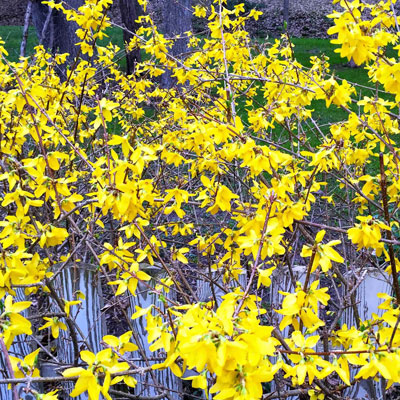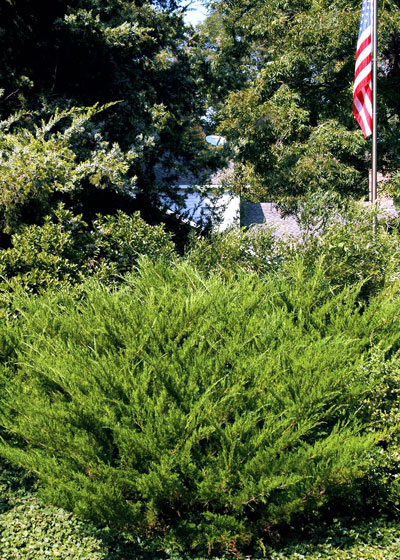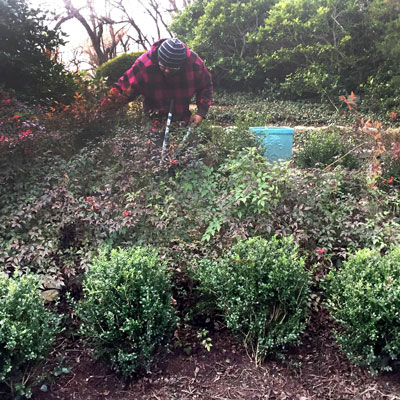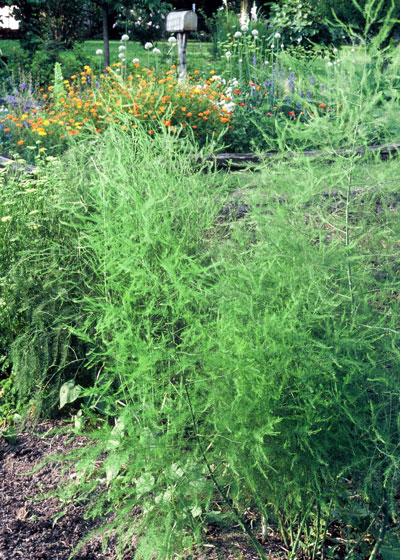Question of the Week – Number One: November 5, 2020
“How far back can I prune my plant?”
As I mentioned, people usually assign a specific plant when they ask this question. I’ll do the same in the list that follows. Plus, I’ll try to give very brief information about timing and techniques. (For purposes of discussion, “mid-winter” means while they are totally dormant in your part of Texas. That would probably be January.)
Evergreen shrubs: mid-winter, preferably branch-by-branch and not more than by 50 percent.

Spring-flowering shrubs and vines: immediately after they finish blooming. Definitely not now. They are setting their flower buds now.
Summer-flowering shrubs and vines: mid-winter, but as little as possible to maintain normal growth form.

Cone-bearing shrubs (junipers, etc.): mid-winter, but definitely branch-by-branch with lopping shears. Do not use hedge trimmers. Maintain natural growth forms.
Groundcovers: Asian jasmine to as low as 3 or 4 inches with a mower, especially if it suffers freeze damage. Mid-winter. Purple wintercreeper to 5 or 6 inches with a hedge trimmer, but only to even it up. Most others should not need trimming.
Roses (bushes): late January South Texas, early February North Texas. Prune by half. Each cut should be made just above a bud facing out from center of plant. (Remove all plants showing rose rosette virus entirely, roots and all.)
Roses (climbers): as needed to shape by removing branches that extend out away from supports. Spring-only bloomers after they bloom. Continuous bloomers by 20-30 percent in late January.
Shade trees: mid-winter to remove dead or damaged branches, low-hanging limbs. Leave no stubs. Hire certified arborists to do all work requiring climbing.
Crape myrtles: any time of the year, but never “top” any crape myrtle for any alleged reason. It ruins the plants. Complete details in e-gardens in a few weeks.

Nandinas: mid-winter to remove tallest one-half of canes completely to ground. In other words, if you have 20 stems, cut 10 back to within 1 inch of soil. New shoots will be produced that will keep plants full and compact. Do this every winter.
Blackberries: canes only bear fruit one year, then never again. Prune to remove those canes immediately after they bear fruit in late May or June. Pinch growing tips out of new canes mid-spring to encourage side-branching.

Asparagus: as soon as first frost turns all foliage yellow cut stems to ground for the winter. If no frost, or if frost is really late, go ahead and cut green stems back around Thanksgiving.
Grapes: mid-winter by removing as much as 80-85 percent of cane growth. Best to see illustrations online or in references.
Peaches and plums: mid-winter to establish bowl-shaped habit of scaffold branches and maintain height of trees at 9 or 10 feet.
Pears and apples: mid-winter, but little regular pruning is needed except to remove dead or damaged branches and strongly vertical shoots (“watersprouts”).
Pecans: mid-winter, but only to remove weak or damaged branches. Most of this work should be done by a professional arborist as it will be high off the ground.

Figs: mid-winter, but limit your pruning as much as possible. Heavy pruning delays production of fruit.
